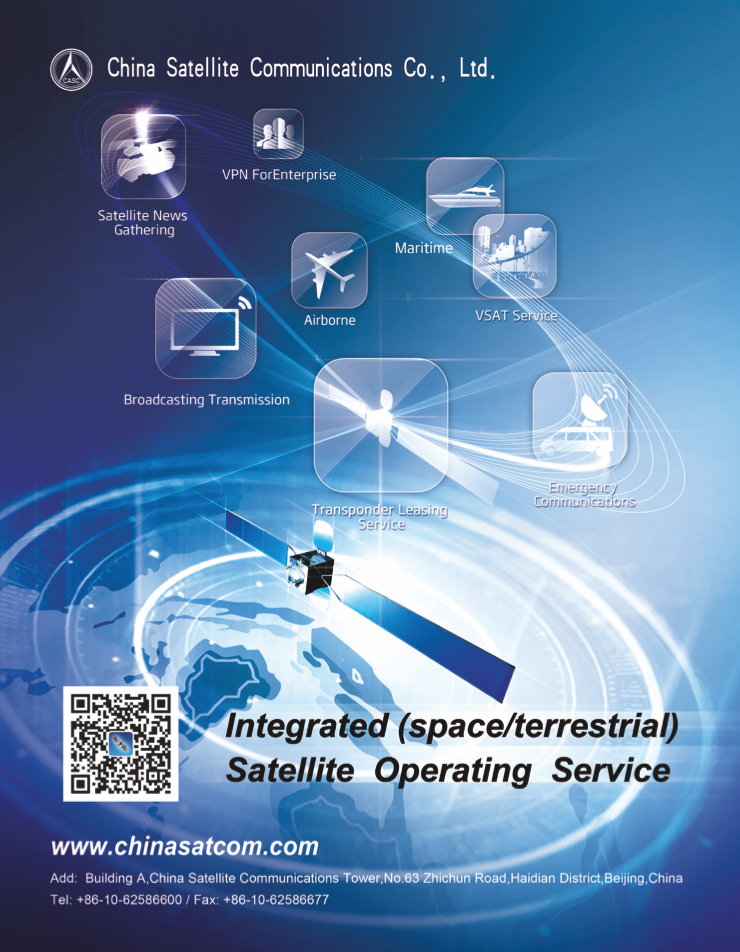The maritime industry is undergoing a fast moving digital revolution. The speed of this change is unprecedented with ship owners and technology companies both rising to the challenge of market forces of supply and demand. Innovative communications technology breakthroughs are driving smart ships and connected fleets, redefining not just the way maritime organizations are managing their communications systems and digital infrastructure, but also revolutionizing their core business models.

From Ships to Connected Fleets
According to industry expert Martin Stopford, the model that has been in place for the last 30 years is one of trading ships, not cargo, i.e., of perceiving ships as business units.
What is needed instead is a new business model where maritime organizations manage transport, not ships. When this is achieved, sea cargo will be fully integrated with inland transport, opening up a new era of global trade.
This evolution taking place already — driven by the smart shipping model where fleets are connected via satellite in real-time and managed as a single unit rather than as a collection of individual units.
For the first time in maritime history, processes are becoming automated with shore side and shipboard personnel integrated into one team. In fact, satellite connectivity is enabling ships to become an extension of on-shore operations. Ships are becoming offices at sea, allowing maritime organizations to adopt electronic reporting, remote monitoring, diagnostics tools and information sharing.
Flexibility and Innovation are at Connectivity’s Forefront
Maritime (VSAT), the key communication system for vessel connectivity and digitization in shipping, has seen a strong increase in installations driven by broadband applications and increasing data usage. Maritime operators are demanding more from their VSAT providers, encouraging the development of higher throughput services and optimal ship-to-shore connectivity.
A gap in the market has recently been filled with the launch of an innovative service providing optimal connectivity in coastal areas. This service combines the provision of VSAT and cellular connectivity in one device enabling ships to automatically switch between mobile and satellite networks.
NSSLGlobal’s FusionIP solution integrates terrestrial and satellite broadband, satisfying the ship operators’ demand for optimum data speeds and cost efficiencies. A unique “antenna solution” specifically engineered in-house to enclose and protect two antennas ensuring seamless transition between the networks. FusionIP recently won the prestigious Most Innovative Satellite Application Award at the VSAT Stellar Awards 2018 that acknowledge the solutions improving global connectivity.
It is such hybrid unified communications solutions combining satellite coverage and cellular systems that we will see increasingly in the future of maritime connectivity, especially in response to the ever-increasing appetite for fast and flexible access to internet services on board vessels.
In response to the demand for faster networks and digitization, NSSLGlobal is forging a reputation as an engineering powerhouse by expanding its Research and Development and global support capabilities.
By diversifying and through targeted acquisitions, such as the SatLink Hub and Modem technology, which is at the core of NSSLGlobal’s world class award-winning VSAT network, it is setting the benchmark for the agile management and new disruptive technology needed. In addition to this, NSSLGlobal is expanding its value added services by including the increasingly important area of crew welfare, through its acquisition of snap.tv and its crew entertainment service CrewVision.

Developing leading edge applications is crucial in securing customer loyalty and attracting new clients and this is where NSSLGlobal is differentiating itself from other providers through the firm’s next generation hosted virtual applications.
Vessel owners want streamlined ships, with less hardware and for their crew to specialize in on board real-time activities. NSSLGlobal’s next generation appliance, Cruise Control+, is providing a cost-effective, single server solution for the seamless management of communications and IT services on board vessels. It enables the remote deployment and delivery of new value added services, the hosting of customer applications with no additional hardware, whilst providing an IT managed service if required through the virtual appliance capability. It is installed locally on board the vessel and is designed to help maritime customers manage their vessel, business, vendor and crew welfare networks.
Vessel owners are reluctant to have their crew spending time on extraneous activities which need up-skilling and training above their daily duties. With NSSLGlobal’s new virtualized environment within the Cruise Control+ appliance, the company is now able to offer management of operating systems and applications.
NSSLGlobal has positioned itself to provide the essential core communications and IT infrastructure and to now provide customers options as to the selection and addition of leading edge innovative services — almost at a “pick ‘n mix” level. Providers need to go beyond traditional airtime and hardware services. With NSSLGlobal’s dedicated R&D arm (NSSLGlobal Technologies), the company is able to continuously review the capabilities as well as the customers on-going needs to future proof itself in a fast moving digital landscape.
Supporting Crews’ On Board Experience
Increasing access to cloud applications at sea means seafarers can use internet entertainment services and stay in touch with family and friends in their downtime — an important aspect of staff wellbeing during long journeys away from home.
However, with the penetration of smartphones among adults in developed countries forecast to surpass 90 percent by the end of 2023, and with an average of three devices per crew member, crew devices and their data-hungry applications (such as movie, TV and content streaming) are generating increasing pressure on vessels’ bandwidth. Maritime organizations are facing a challenge to provide a robust network connection and fast internet access for a positive user experience, regardless of location.

While crew expectations are on the rise, budget conscious ship-owners have in the past been reluctant to invest in on board entertainment technology mainly due to the high up-front cost of additional video streaming hardware, IT support teams and the amount of capacity needed for on-demand video streaming.
NSSLGlobal’s CrewVision is the company’s proprietary ship entertainment service, offering a wide variety of viewing content which uses a dedicated multi-broadcast channel over the firm’s VSAT network. Ship management can provide low cost, continually refreshed, high quality and appropriately licensed content such as movies, TV dramas, documentaries and world news without disrupting operational traffic or the crew’s internet access.
In addition, the unique feature of NSSLGlobal’s VSAT IP@SEA service ensures that the vessels’ data speeds or voice quality are unaffected by the content downloads and also requires no additional hardware. Furthermore, content is continually refreshed using NSSLGlobal’s network capacity, not the vessels’, so there is no impact on the user experience. The result is an optimized, on-board user experience and higher staff retention levels.
Security as the Ultimate Challenge
Approximately 50,000 vessels are at sea or in port at any one time. The maritime industry is, therefore, heavily exposed to cyberattacks, which can have severe repercussions for crew, ship-owners, supply channel partners and customers.
The latest victim, on July 25, 2018, was the Chinese shipping company China Ocean Shipping (COSCO). The company’s network applications were affected and suffered failure, but the company’s ships were, fortunately, not affected and continued to operate normally.
Vessels, however, do not need to be attacked directly because an attack can arrive via a company’s on shore IT systems and penetrate the ship’s critical operational systems. For example, if an attacker finds an open network interface, they can change GPS coordinates, settings, and upload malicious software, allowing for further compromise of the network and exposing an entry point to key control systems.
Cybersecurity is an issue but can be managed effectively if maritime companies approach it strategically, addressing and mitigating risks coming from the outside and within their organisation.
Acknowledging the evolving threat landscape within the maritime industry and the increasingly connected world on board vessels, NSSLGlobal uses its decades of cybersecurity experience delivering secure solutions to the world’s largest governments to ensure that critical security controls are at the core of all of its products, applications and services. NSSLGlobal’s solutions are focused on ensuring customers are able to maintain control of their network with a robust secure infrastructure delivering voice, data and IT services and connectivity. From hub-side to vessel-side control, NSSLGlobal has a range of end-point infrastructure protections in place ensuring customers are cyber secure at sea.
Best practice also shows that any solution should have protections built into the core infrastructure, as well as at vessel level. For example, NSSLGlobal’s Cruise Control+ can provide as a starting point six on-board networks enabling the separation of business and crew networks.
When selecting a SATCOM provider, maritime organizations should look for accreditation from relevant cybersecurity authorities, such as Datenschutz in Germany or the UK Government’s Cyber Essentials Plus certifications.
What Next?
Digitization of the maritime industry is well underway and the continued increase in the number of connected ships is revolutionizing the sector.
Ships are effectively becoming offices and homes at sea and an extension of on-shore operations. VSAT connectivity is enabling this, with innovative hybrid solutions that combine satellite coverage and cellular systems providing optimum data speeds and cost efficiency.
Larger companies are partnering to develop crewless transport vessels, such as Rolls Royce with Intel, and such collaborations will no doubt result in technological marvels combining the science-fiction vision and splendor of the “Nautilus and the USS Enterprise.”
The maritime sector is maturing and is providing opportunities and, importantly, is receptive to smaller, nimbler organizations to satisfy the practical everyday needs of vessel owners who are looking for faster connectivity, flexible packages, excellent customer service and cost-effective value add extensions.
The engineering expertise and vision to develop a single system that combines the best of VSAT and LTE worlds into a single radome and package is driving providers to develop disruptive applications such as FusionIP to give them the speed and quality of terrestrial voice and data connectivity. Governments continue to expect robust, reliable solutions suitable for the most extreme conditions and the commercial sector is exploding in its need for secure, customized, virtualized applications and managed services. However, what remains a constant across all sectors is the need for creative products as well as for products that meet the needs of the market.
Agile communications providers, such as NSSLGlobal, are seizing this opportunity to develop innovative products and enhanced services to fill the gaps in the market. Ship owners will be increasingly looking for providers that give them flexible solutions; the best SATCOMs network, hosted applications installed and managed remotely, helping them to focus on key on-board operational priorities.
What we can predict is that rising communications demand will continue to fuel significant growth in VSAT communications.
www.nsslglobal.com


